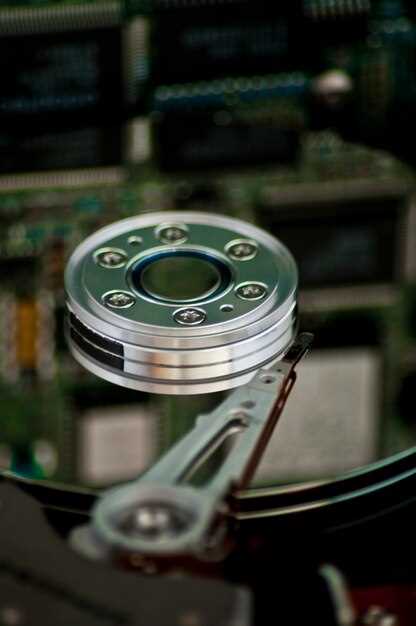
In the world of high-performance vehicles, ECU tuning has emerged as a crucial tool for unlocking the latent power of an engine. The Electronic Control Unit (ECU) serves as the brain of the vehicle, managing and optimizing engine functions to ensure efficiency and performance. By reprogramming the ECU, enthusiasts can fine-tune various parameters, enhancing horsepower and torque levels significantly.
The process of tuning goes beyond mere adjustments; it involves a deep understanding of engine dynamics and the specific characteristics of each vehicle. With the right tuning modifications, drivers can transform their ordinary cars into muscle machines, capable of delivering exhilarating performance on demand. This hidden potential within the engine can be uncovered through careful adjustments to fuel maps, ignition timing, and turbocharger boost levels.
As enthusiasts seek to push the boundaries of their vehicles, ECU tuning becomes an invaluable strategy. It not only optimizes performance but also enhances driving experiences, offering a perfect blend of power and responsiveness. The journey into ECU tuning unveils a world where every tweak can lead to improved acceleration, speed, and overall driving excitement.
Understanding ECU Tuning Basics for Muscle Cars
ECU tuning is a critical process that enhances the performance of muscle cars by modifying the vehicle’s Engine Control Unit (ECU). This tuning adjusts various parameters to unlock hidden power and improve overall drivability. Below are the fundamental concepts associated with ECU tuning for muscle cars.
- What is ECU?
The Engine Control Unit is an onboard computer that manages engine functions. It regulates fuel injection, ignition timing, and various other aspects that influence engine performance.
- Why Tune the ECU?
Tuning the ECU can lead to significant performance improvements, including:
- Increased horsepower and torque
- Improved throttle response
- Enhanced fuel efficiency
- Better drivability under various conditions
- Methods of ECU Tuning
There are several methods to tune an ECU, including:
- Reflashing: Uploading new parameters directly into the existing ECU firmware.
- Chipping: Replacing the ECU chip with one programmed for improved performance.
- Standalone ECU: Installing an aftermarket ECU that offers advanced tuning capabilities.
- Factors to Consider
Before tuning, consider the following:
- The type of modifications already done to the car (e.g., exhaust system, intake upgrades)
- The intended use of the vehicle (e.g., daily driving, racing, or spirited driving)
- Compatibility with existing engine components
- Risks of ECU Tuning
While tuning can enhance performance, it also carries certain risks:
- Potential engine damage if tuned improperly
- Warranty voiding from the manufacturer
- Decreased reliability if the modifications exceed the engine’s capabilities
In summary, understanding the basics of ECU tuning is essential for muscle car enthusiasts seeking to maximize their vehicle’s potential. Proper tuning can yield impressive performance benefits, but it requires careful consideration and expertise to avoid potential pitfalls.
Identifying OEM Limitations and Performance Gains
Original Equipment Manufacturer (OEM) settings in a car’s ECU are designed to balance performance, fuel efficiency, and emissions compliance. However, these factory settings often impose limitations that prevent the engine from reaching its full potential. Understanding these OEM restrictions is crucial for car enthusiasts looking to unlock greater performance through tuning.
One of the primary limitations is the conservative fuel maps implemented by OEMs. These maps are carefully calibrated to ensure optimal performance under various driving conditions while considering factors such as fuel quality and engine longevity. However, they often restrict the amount of fuel injected into the engine, leading to a performance ceiling that can be lifted through tuning.
Another common limitation is the ignition timing. OEMs tend to set conservative timing values to avoid potential knock and ensure engine reliability. By adjusting the timing maps during the ECU tuning process, it is possible to enhance throttle response and overall engine performance significantly.
Additionally, turbocharged engines may have stock boost levels that fail to exploit the full potential of the engine’s design. Tuners can modify boost settings in the ECU, allowing the engine to produce more power. This adjustment must be made carefully to avoid exceeding the engine’s mechanical limits.
Tuning can also enrich the engine’s air-fuel mixture, improving the combustion process and enhancing power output. By addressing the OEM limitations and optimizing various parameters, car owners can experience marked improvements in performance metrics such as horsepower and torque.
Ultimately, ECU tuning is a powerful tool for identifying and overcoming OEM limitations. Through careful adjustments, car enthusiasts can tap into the hidden potential of their engines, achieving performance gains that transform the driving experience.
Key Metrics to Monitor During ECU Optimization
When it comes to ECU tuning, understanding the key metrics is crucial for maximizing your car’s performance. The optimization process involves adjusting various parameters to unleash the hidden potential of your engine. Here are the essential metrics to monitor:
Air-Fuel Ratio (AFR): This metric plays a vital role in engine performance. An optimal AFR ensures the combustion process is efficient, preventing issues like knocking or excessive emissions. Monitoring this ratio helps in fine-tuning how the engine utilizes fuel under different conditions.
Boost Pressure: For turbocharged or supercharged engines, boost pressure is a significant factor. Tracking this metric allows you to understand how much extra air is being forced into the engine, which directly affects power output. Adjusting boost levels during tuning can significantly enhance performance if done within safe limits.
Ignition Timing: This metric involves when the spark plug ignites the air-fuel mixture in the engine cylinder. Properly set ignition timing is essential for maximizing the power and efficiency of your car. Monitoring this parameter during tuning can lead to improvements in throttle response and overall engine performance.
Engine Temperature: Heat is a natural byproduct of combustion and can affect performance and reliability. Keeping an eye on engine temperatures during the tuning process is crucial. Overheating can lead to engine damage, while proper cooling ensures the performance gains are sustainable.
Throttle Position: The position of the throttle tells how much air is being allowed into the engine, impacting power delivery and responsiveness. Monitoring throttle position can assist in making adjustments to ensure the engine responds optimally to driver inputs during ECU tuning.
In conclusion, focusing on these key metrics during ECU optimization will not only enhance your car’s performance but also ensure that your tuning is safe and effective. By closely monitoring air-fuel ratios, boost pressure, ignition timing, engine temperature, and throttle position, you can unlock the full potential of your engine while avoiding potential pitfalls. Proper ECU tuning requires attention to detail and an understanding of how these metrics interact to provide the best performance outcomes.
Common ECU Tuning Mistakes to Avoid

When it comes to ECU tuning, many car enthusiasts aim to unlock the hidden potential of their muscle cars. However, there are several common mistakes that can hinder performance or even damage the engine. Recognizing and avoiding these pitfalls is essential for successful tuning.
One major mistake is neglecting to use a proper tuning software that is compatible with the specific make and model of the car. Using generic or incorrect software can lead to improper adjustments, resulting in poor performance or engine failure.
Another frequent error is overlooking the importance of data logging. Failing to monitor real-time parameters such as air-fuel ratios or engine temperature can prevent you from making informed decisions during the tuning process. This oversight could lead to lean conditions or overheating, ultimately harming your muscle car.
Additionally, many tuners forget to account for supporting modifications. If you enhance the engine’s performance through tuning but ignore the necessity for upgraded fuel injectors, exhaust systems, or intercoolers, you may not fully realize the potential gains. Properly balancing these components is critical for achieving optimal performance.
Moreover, some enthusiasts rush the tuning process without adequate testing and validation. Conducting small tweaks and immediately pushing the car to its limits can result in catastrophic failures. Take the time to test changes methodically and ensure each adjustment is beneficial before proceeding.
Lastly, ignoring the advice of experienced tuners and forums can also lead to mistakes. While personal flair and experimentation are part of the muscle car culture, learning from the community can save time and prevent costly errors. Continuous education is vital for anyone looking to maximize their vehicle’s performance through effective ECU tuning.
Choosing the Right Tuning Software for Your Vehicle
Tuning your vehicle’s ECU can unlock hidden potential, transforming a standard engine into a muscle powerhouse. When selecting the appropriate tuning software, several key factors should be considered to ensure optimal performance and safety.
Firstly, compatibility is crucial. Verify that the software supports your vehicle’s make and model. Many applications provide tailored solutions for specific brands, which can lead to more effective tuning results.
Next, assess the features offered by the software. Look for options that allow real-time data logging, diagnostic capabilities, and tuning maps customization. Advanced features can enhance your ability to monitor performance metrics and adjust parameters to suit your driving style.
User experience also plays a significant role. Opt for software with an intuitive interface that simplifies the tuning process. This will make it easier to navigate complex adjustments, even if you have limited technical knowledge.
Additionally, consider the community and support surrounding the software. A thriving user community provides valuable insights, while comprehensive support can assist you in troubleshooting issues that may arise during the tuning process.
Finally, review user testimonials and expert reviews. Real-world feedback can help you gauge the effectiveness of the software and its impact on engine performance. Taking the time to choose the right tuning software will ensure that you maximize your engine’s potential safely and efficiently.
Real-World Examples of Muscle Cars Post-Tuning Enhancements

Tuning a muscle car can significantly enhance its performance, unleashing the hidden potential of its engine. A prime example is the Ford Mustang GT. After custom ECU tuning, many owners report an increase in horsepower, often reaching upwards of 50 additional horsepower. This upgraded performance allows the Mustang to achieve quicker acceleration and improved throttle response, making it a formidable contender on the streets.
Another impressive case is the Chevrolet Camaro SS. Following tuning adjustments, enthusiasts have documented substantial improvements in both engine output and driving dynamics. Enhanced tuning not only optimizes fuel delivery but also refines the ignition timing, resulting in a sportier driving experience and increased torque, perfect for muscle car aficionados looking for that extra edge.
Additionally, the Dodge Charger is a notable participant in the tuning scene. Owners who invest in specialized tuning packages report noticeable boosts in overall performance. Customizing the Charger’s ECU can lead to a remarkable increase in both horsepower and torque, making it a powerful vehicle capable of thrilling acceleration while maintaining everyday drivability.
Lastly, the Pontiac GTO, a classic muscle car, showcases the benefits of tuning after its production run. Many GTO enthusiasts have turned to aftermarket tuning solutions, leading to improved engine efficiency and significantly enhanced performance metrics, which breathe new life into this legendary vehicle.
These real-world examples highlight how tuning can unlock the hidden potential of muscle cars, transforming them into more powerful machines on the road.




